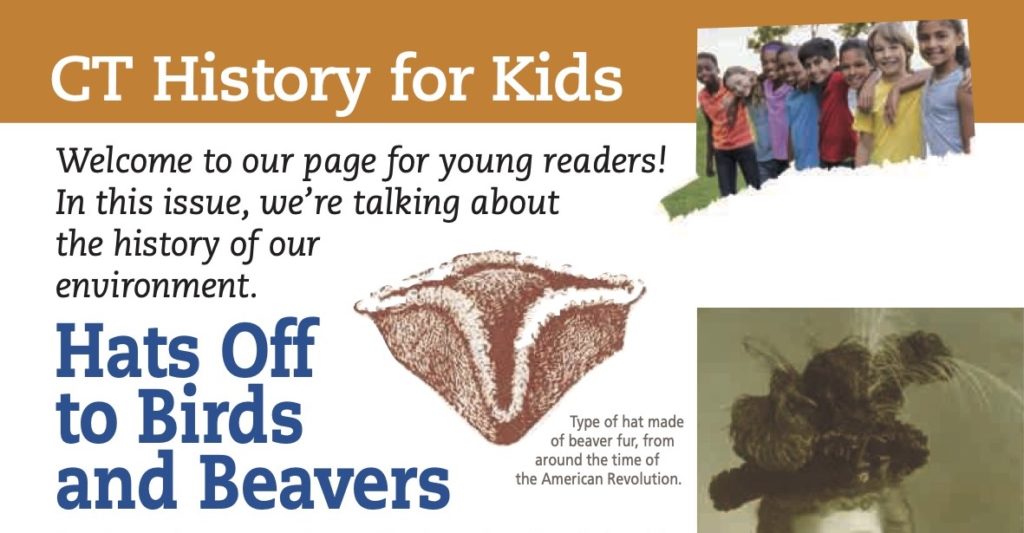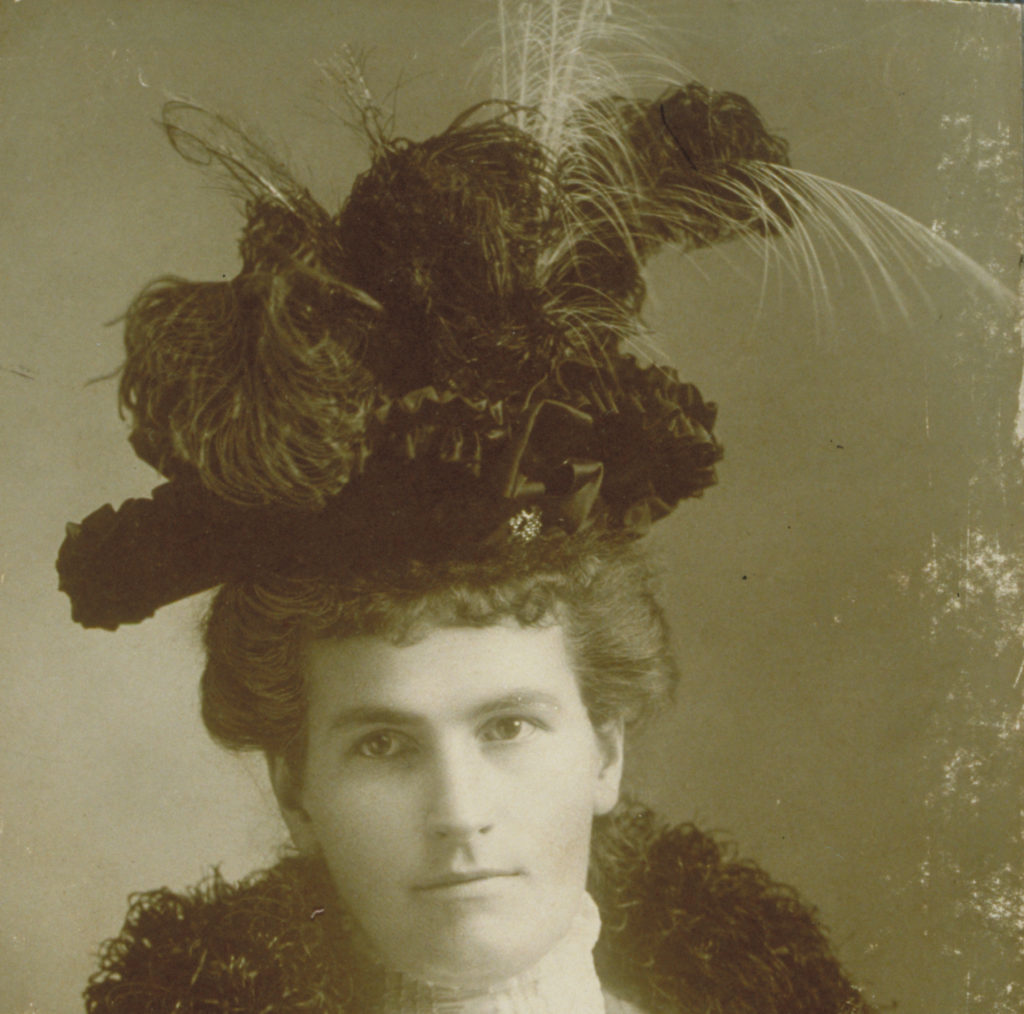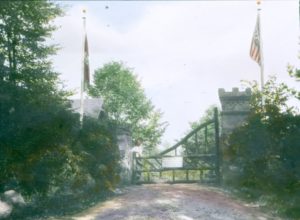
right: a woman’s hat decorated with feathers; some may be egret feathers, 1890.
Connecticut Historical Society, Hartford
(c) Connecticut Explored Inc. Spring 2021
Sometimes, what we wear has a devastating impact on the environment. A good example is what we wear on our heads.
In colonial times men’s hats often were made of beaver fur. Beaver fur was waterproof, and it was a beautiful, shiny dark brown. In the early 1600s European explorers came to what would later become Connecticut in search of beaver skins. They traded with the Native Americans. They traded goods from Europe for beaver pelts. By the early 1800s, though, there weren’t any beavers left in Connecticut.

Anna Schultz Jaegar of Hartford wearing a hat decorated with feathers; some may be egret feathers, 1890.
Connecticut Historical Society, Hartford
In the late 1900s women’s hats often were decorated with bird feathers. Feather hunters hunted birds with showy feathers. They sold the feathers to hat makers. The more popular these hats became, the more birds the hunters killed. Egrets and herons had especially desirable feathers. By the late 1900s people who loved birds were afraid these birds would disappear from Connecticut.
How could these birds be saved? One way was to pass laws protecting birds. The Connecticut General Assembly passed one of the country’s earliest laws protecting birds in 1850. They passed another one in 1901.
A second way to save birds was to change people’s ideas about what was fashionable. If feathery hats became unpopular, hat makers would stop putting
feathers on their hats. If feather hunters couldn’t sell their feathers, they wouldn’t kill so many birds.
Mabel Osgood Wright of Fairfield loved birds. She helped found the Connecticut Audubon Society in 1898. This organization worked to convince women not to wear hats with feathers. It also argued for laws to protect birds. Wright also created a safe place for birds. She and her friend Annie B. Jennings created a bird sanctuary. Wright said it was a place where birds could “nest in peace, or rest in their travels.” That place is called Birdcraft, and you can visit it in Fairfield.
Beavers were brought back to Connecticut. In 1914 someone trapped two beavers outside the state and freed them in Union. Some beavers moved on their own from New York and Massachusetts. In 2000 there were about 8,000 beavers in Connecticut!
Sources: “Why We Need Beavers,” Spring 2019, “Site Lines: Birdcraft,” Fall 2017, “Fish, Game, and Forest Conservation Through Time,” Spring 2021.
Explore!
Birdcraft Sanctuary
314 Unquowa Road, Fairfield
ctaudubon.org/birdcraft-museum, 203-259-0416
Beavers in Connecticut: Their Natural History and Management (Connecticut Department of Environmental Protection, 2001)
portal.ct.gov/-/media/DEEP/wildlife/pdf_files/habitat/beaverctpdf.pdf
GO TO THE NEXT STORY
Subscribe/Buy the Issue!
Sign up for our free bi-weekly e-newsletter

